
L.O. Griffith
It is absurd how much I love this country.
Frontier painters
Artistic affection for the highly hued beauty of this wild landscape of canyons and big skies began with the Comanches and their haunting rock art, followed by Anglo artists, including Georgia O'Keeffe, Frank Reaugh, L.O. Griffith, and Josephine Oliver, who came early into this Texas frontier territory.
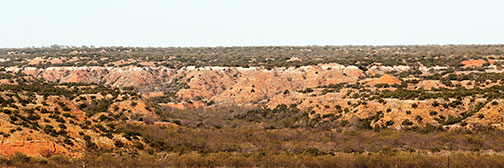

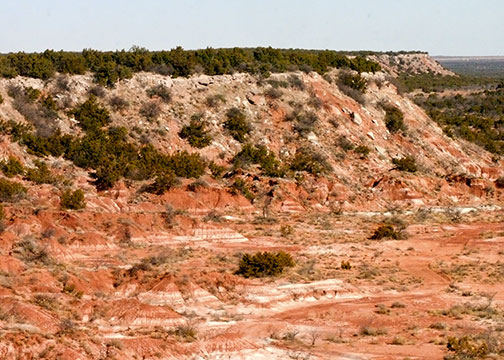
Canyon walls slope down into the eastern floor of Longhorn Valley
Eroded cliffs that frame the northern rim of Longhorn Valley
Reaugh followed the cowboys and their Longhorns up the Brazos, first in 1883 and again with Griffith in 1901. O'Keeffe came to the Palo Duro canyon area at the Red River headwaters first in 1913 as a young teacher in Amarillo, beginning her long, prolific artistic romance with the American Southwest
Focusing on shapes, textures, colors and light, O'Keeffe painted the Texas plains and canyons of Palo Duro and wrote about these Texas Canyonlands: “It is absurd how much I love this country.”
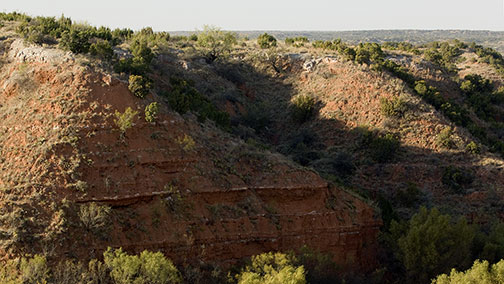
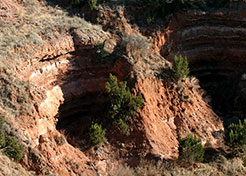
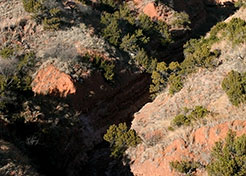
Light and shadows in the late afternoon shaped by canyon walls in Longhorn Valley
Georgia O'Keeffe
From 1912 to 1914, Georgia O'Keeffe was supervisor of art in the public school system of Amarillo, Texas. In 1914, she left Amarillo and moved to New York. But in in the fall of 1916, O'Keeffe returned to Texas to teach at West Texas State Normal College (now West Texas A&M University) in Canyon.
O'Keeffe's paintings can be found in major museums throughout the country, with the largest collection in the Georgia O'Keeffe Museum in Santa Fe, New Mexico. Following are links to a few examples of her paintings that she created during her residence in Texas.

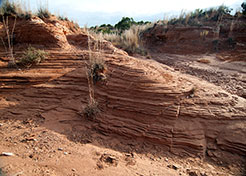
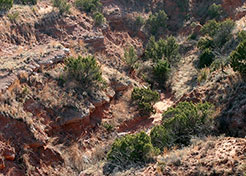
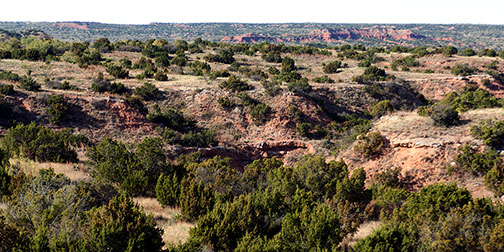
Typical canyonlands landscape form abraded by wind and water erosion in Impossible Canyon
Dry creek bed in Impossible Canyon shimmering in the sunlight
It is my hope that my pictures portraying those times, aside from any artistic merit that they may possess, will tell their story, and will be preserved because of historical value; for the steer and the cowboy have gone, the range has been fenced and plowed, and the beauty of the early days is but a memory.
Frank Reaugh
Major collections of the paintings of Frank Reaugh reside at the University of Texas, Harry Ransom Humanities Research Center and the Panhandle-Plains Historical Museum in Canyon, Texas.
On the Harry Ransom Humanities Research Center website, you will find more information about the life and art of Frank Reaugh, the “Dean of Texas Artists,” as well as samples of his art from this period.
brazosrivercanyonlands.com is published by Jim Watson and licensed
under a Creative Commons Attribution-NonCommercial 4.0 International License.